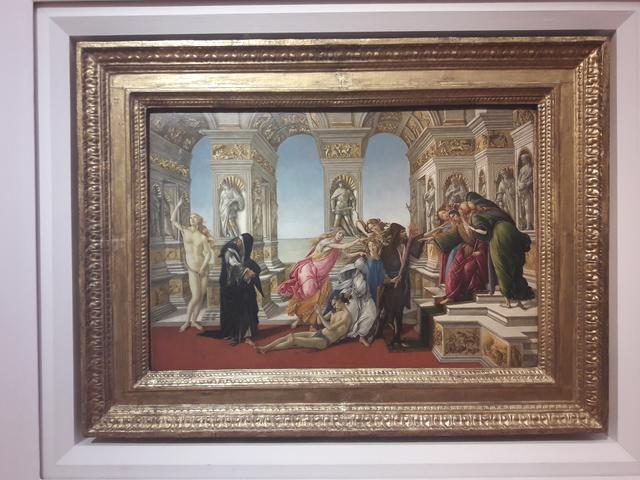Slander of Apelles

The Calumny of Apelles is a tempera panel painting by the Italian Renaissance painter Sandro Botticelli. Based on the description of a lost ancient painting by Apelles, the work was completed around 1494–95, and is now in the Uffizi, Florence.
The content of the Apelles painting, as described by Lucian, became popular in Renaissance Italy, and Botticelli was neither the first nor the last Italian Renaissance artist to depict it. Leon Battista Alberti praised it and recommended it as a subject for artists to recreate in his influential 'De pictura' of 1435, and there were four translations from Lucian's Greek into Latin or Italian during the 15th century.
A number of Botticelli's secular works show interest in recreating some of the lost glories of ancient Greek painting, which are recorded in classical literature, especially ekphrasis, a popular literary genre consisting of the description of a painting, which had a obvious usefulness before reproductions were widespread. His Mars and Venus, painted about ten years earlier, generally agree to borrow part of its composition, the childish satyrs playing in Mars's armor, from another ekphrasis by Lucian, but no other painting by Botticelli is clearly an attempt to recreate a old composition. Almost entirely.
The painting is an allegory with nine figures (as well as many painted statues), but at 62 x 91 cm it is much smaller than his large mythological paintings, but larger than the usual size of his spalliere pieces intended to fit into panels or furniture. However, it is comparable in size to his Mystical Nativity, and so may have been painted for his own use. It was completed around 1494 or 1495, and is probably the last surviving secular painting of his. It is often speculated that Botticelli had a specific maligned individual in mind, perhaps himself or Savonarola. In 1502, some years after the painting's probable date, an anonymous complaint to the authorities accused Botticelli of sodomy.
© Tourblink